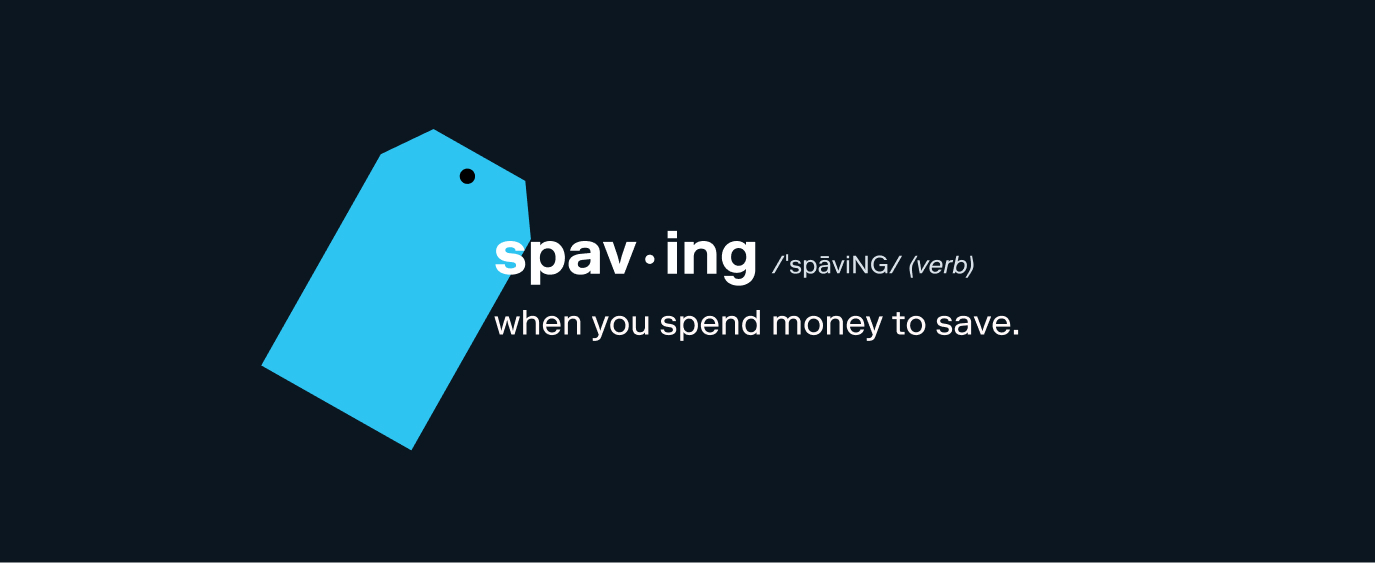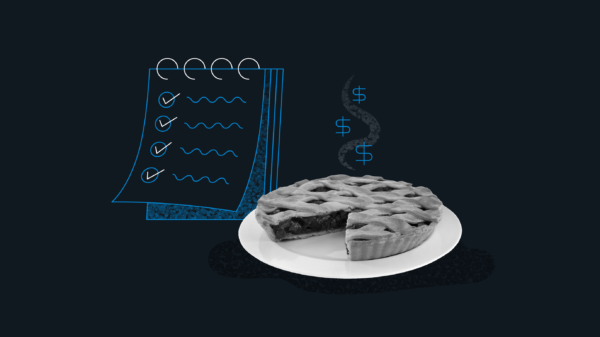Jan 15, 2021
What’s “Spaving,” and How to Avoid It
Don’t fall for overspending traps when you’re shopping.

I’m generally pretty good with money. I save more than I spend. I set money aside each month toward savings and toward my retirement. But I do have a major weakness—I tend to overdo it with the deals. Set me loose in a discount grocery chain or in a store during a mega sale and I lose sense of control and spending limits.
This habit is called “spaving,” which is when you spend money to save, only to find yourself with less money in the bank and more stuff you probably don’t need.
I’m certainly not alone. According to research from Slickdeals.net, consumers overspend $7,400 a year, or $143 a week. The three most common gateways to spending above your budget are online shopping, grocery shopping, and subscription services.
Let’s look at the behavioral economics underlying spaving, and what you can do to kick this habit to the curb.
The behavioral economics behind spaving
Retailers understand that for most customers, price is a reflection of value, says Mariel Beasley, co-founder of the Common Cents Lab at Duke University in Durham, North Carolina.
“We don’t inherently know what something is worth and how good it is, so we assume that the price demonstrates that,” she says. So when you see an item dramatically marked down from the original price tag, you think you’re getting more for less money.
This is an example of how behavioral economics, a branch of human psychology, can explain why people stray from making rational spending and saving decisions. Here are a few spending traps to avoid:
The compelling pull of free. This is particularly relevant for “buy one, get one” deals, where you need to spend a set amount on an item, or items, to snag something for free.
“Free has an allure that even the smallest cost doesn’t have because we tend to not think about the downsides or opportunity costs associated with free,” says Beasley.
Limited time offers. Retailers create pressure by offering deals with expiration dates. “Deadlines help us focus and overcome procrastination,” says Beasley. “We worry about missing out on something that we may want in the future and are prompted to buy things before the deadline.”
Social norms. As social creatures, humans look to what others are doing as cues about what they should do, says Beasley. “So when it seems like everyone is taking advantage of the Labor Day Sale or Black Friday or Prime Day, we assume that we should as well, even if we weren’t actually needing anything at the moment,” she says.
Moral licensing effect. This is a psychological phenomenon that links what people perceive as “bad” behavior, such as spending on unnecessary purchases, with offsetting “good” behavior, such as shopping “smart” by getting a deal. “It’s easier to put aside your worries about spending if it’s paired with something that feels like a positive financial decision,” says Washington D.C.-based Heidi Johnson, director of behavioral economics for the Financial Health Network, a non-profit research consortium.
Visit drivers. These are deals that bring you into a store where you might not typically go. “Maybe you normally shop at one market, but you see an ad in the newspaper that your usual body wash is 50% off at the other store,” says Helen Robb, the Financial Health Network’s senior manager of data and analytics. By reeling you in with a single deal, the grocery chain could encourage you to spend your entire grocery budget at that store. Using tactics such as visit drivers can certainly be worthwhile for the retailer
Ways to control spending
Here are some ideas that can help you combat retail marketing strategies designed to separate you from your money.
Create a spending plan. Budgets can serve as a reality check for people to see the expenses they need to cover. However, setting up a realistic budget is the key to success, says Johnson.
One key roadblock is that people tend to think that their past expenses are lower than they actually are, and then to assume that their future expenses will also be unrealistically lower, according to research. This is called expense prediction bias. Since people may think they’ll spend less in the future, they’re more likely to set up an unrealistic budget.
“This sets people up for failure, which is discouraging,” says Johnson. “And because it’s not possible to meet the goals they’ve set, it sets them further off track.”
Check your opportunity costs. Often, we don’t think about what we’re giving up when we make a purchase, says Beasley. So when we see a great deal, we get excited and think about how much we saved rather than thinking about the trade-offs.
“So when you are contemplating a great deal, ask yourself: ‘If I didn’t buy this item for $50, what could I do with that $50 instead?” says Beasley. “Then think about whether this purchase is more important to you than what else you could do with that $50.” This concept is called opportunity cost. Another way to think of it is how many hours you had to work to purchase that item.
Stock up during sales. If you are going to buy in bulk, consider spending more when the items you need are on sale, then slow down your spending when they’re not. That way, you’ll be getting the most bang for your buck.
Compare prices based on units. A key rule of shopping: the bigger the quantity you’re buying, the cheaper it should be per unit. So if you’re buying a 24 pack of flavored water, the cost per can should be less expensive than the 12 pack. “Sometimes promotions can break that rule, making a smaller box cheaper per unit,” says Robb. “Keep an eye on times when that rule is broken and make the most of those sales.”
Look at the actual prices, not the retail prices. Try to compare the final cost across stores or platforms, suggests Beasley. Ignore the retailer’s price or full price, which could create the illusion of a deal. “The full price of the item should be irrelevant,” says Beasley. “You should only be paying attention to whether you think these pants are worth $50, not what the pants were originally priced at.”
While it’s far too easy to spend on deals, knowing what the common spending traps are, and how to best avoid them, can help save your budget. With Stash, you can create partitions within your account to help you stay on budget.1 You can make partitions for separate spending and saving goals, such as “grocery shopping” or “new home fund.”
1Money moved into a partition must be moved back to the bank account available balance to be used and does not earn interest.
Related Articles

The 2024 Financial Checklist: A Guide to a Confident New Year

9 Ways to Celebrate Financial Wellness Month

Budgeting for Young Adults: 19 Money Saving Tips for 2024

The Best Personal Finance Books on Money Skills, Investing, and Creating Your Best Life for 2024

What Is a Financial Plan? A Beginner’s Guide to Financial Planning

How to Save Money: 45 Best Ways to Grow Your Savings





